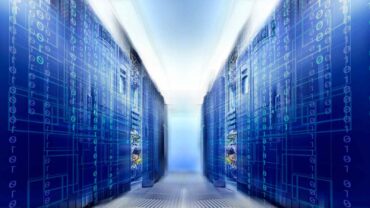
With automated technology bringing disparate data together, there is a firm data foundation to unlock the next generation of digital transformation.
Data is a key enabler of digital transformation – helping organizations to identify new opportunities, make better decisions, and improve operational efficiency. And in our hyperconnected world, there is certainly no shortage of data, as every digital interaction generates vast quantities of it.
But data needs to be discovered, analyzed, and used to generate actionable insights if it is to deliver business benefits. So, it’s no surprise that organizations are drawn to technologies such as artificial intelligence (AI) and blockchain to find a ‘silver bullet’ to unlock the next wave of transformation.
What is often overlooked, though, is the fact that unless the right data is gathered in the first place – and harnessed effectively – any attempt at digital transformation will fall victim to the classic trap of ‘garbage in, garbage out.’
The supply chain industry is an example of how there is often a huge chasm between the vast amount of data being generated and businesses being able to harness that data. Blockchain and AI are not capable of bridging this gap – it is not what they are designed to do.
At first sight, the complexity of modern supply chains, the number of influencing factors, and the variety of separate organizations interconnecting all suggest that the latest next-generation technologies hold the key to success. After all, blockchain offers the ability to provide many different stakeholders with access to trusted data across a supply chain network, and AI provides a path to predictive, autonomous decision making.
However, accessing data in the supply chain is no mean feat, as relevant data could reside in a separate business unit or an external organization. And, without the whole picture, it is difficult to maximize value.
It is tempting to think the answer lies in collecting vast quantities of data, storing it on a blockchain so it is ‘trusted,’ and then relying on AI to deliver valuable insights to transform business operations. There are plenty of data lakes and data warehouses to help with this approach. But it’s not as simple as that.
See also: The Semantic Layer’s Role in Analytics and Data Integration
Enter digital twins
The secret of success when it comes to bridging the data chasm is to look at data through the lens of the entity it relates to, not the data itself. Looking at real-world objects and using data to describe them digitally allows more comprehensive and intricate pictures to emerge. This is why digital twin technology holds the key to unlocking the next wave of digital transformation.
By enabling real-time models of real-world objects to be created in the digital world, it makes them accessible by all participants in a supply chain via a central platform. These digital entities comprise all relevant data for a consignment, dynamically updating in real time with new data as the consignment progresses through the supply chain. Consignment and inventory data can be combined with transport schedules and allocated transport, for example. Data captured from a vehicle telematics system can then be added to the relevant consignment digital twin, offering real-time information contextualized to an individual consignment.
Relationships between these digital entities are created by the use of intelligent data orchestration – unlocking complex, real-time, multi-dimensional insights with the data that is generated across the supply chain. Relationships between entities are dynamic, changing over time and reflecting the real world. The questions being asked of the data can be easily changed, and new entities can be introduced. The resulting digital twin provides a real-time, reflective picture of what is happening, from which insights can be generated.
This approach provides a framework that enables targeted data capture, ensuring only relevant data is sourced from connected systems – with little or no effort required from the respective domains. This is important for a supply chain where the requirements of each stakeholder are different. The telematics system used by a hauler, for example, will provide visibility of all its vehicles all the time – something that is necessary for the company to monitor its vehicle fleet. The manufacturer whose goods are being transported, on the other hand, simply wants to know where their consignment is in real time. They only need the GPS data of a specific vehicle for a specific period of time while the goods are being moved.
With automated technology bringing disparate data together, structuring it to form a complete data product, and dissolving it at the end of its operational lifecycle, there is a firm data foundation to unlock the next generation of digital transformation. Intelligent data orchestration can also feed data into a blockchain, providing long-term trust in the data and ensuring integrity. And the foundation intelligent data orchestration provides can also fuel machine learning and AI models to provide predictive analysis across operations.
There is no single answer to unlocking digital transformation. It will be a combination of technologies, each playing an important role. What is critical is that these technologies are used in the correct way, playing to their respective strengths and helping to drive the next wave of change across our connected world.




























